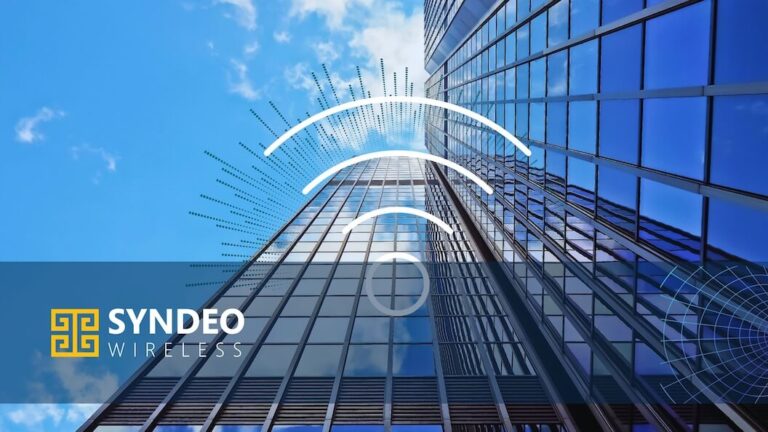The future of connectivity demands a foundation that starts indoors.
There was a time when poor indoor cell signal was considered annoying, but tolerable. Dropped calls in elevators, buffering in parking garages, or zero bars in conference rooms were part of the “cost of doing business.” But that time is over.
In today’s mobile-first, always-on world, in-building wireless systems are no longer optional—they’re foundational. Whether you’re managing a hotel, designing a high-rise, operating a healthcare facility, or building a smart campus, seamless indoor connectivity is now expected by tenants, guests, staff, and even emergency services.
Connectivity Has Become a Core Utility
Just like electricity, HVAC, and plumbing, wireless infrastructure now sits at the center of building performance. It fuels everything from:
- Point-of-sale systems and mobile check-ins
- Smart lighting, thermostats, and IoT devices
- Security cameras, badge readers, and emergency alerts
- Real-time collaboration tools and cloud-based workflows
- Tenant experience apps and visitor management systems
When connectivity fails, so do all of the above.
Why Traditional Cellular Coverage Falls Short
Modern construction materials—think low-E glass, concrete cores, and steel-reinforced framing—are great for sustainability and structure, but terrible for RF signals. Even if your property is in a strong coverage area, those signals often can’t penetrate inside.
What’s more, as 5G and LTE networks become denser and more data-intensive, relying on macro towers for reliable indoor performance is increasingly unrealistic. Without dedicated in-building wireless systems, your building becomes a dead zone by design.
The Rise of Private Wireless Networks
One of the biggest innovations in enterprise connectivity is the emergence of private wireless networks using CBRS (Citizens Broadband Radio Service). This licensed spectrum opens the door for building owners and operators to create secure, dedicated cellular environments—independent of traditional carrier infrastructure.
Private networks offer:
- Priority control over bandwidth and coverage
- Data security and on-premise control
- Support for critical applications like IoT, building automation, and voice-over-LTE
- High-performance indoor connectivity with 5G capability
- Seamless hand-off to public networks via MOCN (Multi-Operator Core Network) gateways
Combined with DAS (Distributed Antenna Systems) and small-cell architecture, CBRS and private LTE create robust wireless ecosystems designed to scale with the evolving demands of smart buildings.
Public Safety Is Driving Compliance, Too
Beyond convenience and speed, connectivity has life-saving implications. Local jurisdictions across the U.S. now require buildings to implement ERRCS (Emergency Responder Radio Communication Systems) and BDAs (Bi-Directional Amplifiers) to ensure fire and police radios function indoors during an emergency.
These are no longer “nice-to-have” features—they are code-mandated systems with real inspection and compliance consequences.
What’s Next for In-Building Wireless?
We’re entering an era where the digital experience of a building is just as important as the physical one. Properties are being rated—and chosen—based on mobile performance, tenant-facing tech, and operational connectivity.
To stay competitive, developers, architects, and owners must begin integrating wireless infrastructure early in the design process. Waiting until after construction only leads to higher costs, retrofits, and missed opportunities.
What’s New in DAS Technology?
As demand for high-capacity indoor coverage grows, hosis rapidly evolving. One of the most significant advancements is the shift toward digital and fiber-based DAS architectures, which allow for more efficient signal distribution, simplified cabling, and easier scalability across multi-floor or multi-building properties. These systems offer improved signal clarity, lower latency, and better support for 5G frequencies—making them ideal for smart buildings and dense environments.
Additionally, new DAS platforms now feature multi-operator core network (MOCN) integration, which enables simultaneous support for multiple carriers through a shared infrastructure. This eliminates the delays and costs of coordinating separate deployments with each provider. Some systems are also becoming “DAS-as-a-Service” ready, offering remote management, real-time monitoring, and automated alerts to ensure peak performance without heavy IT involvement. Together, these innovations are transforming DAS from a static utility into a dynamic, future-ready connectivity backbone.
The Bottom Line about In-Building Wireless Technology
In-building wireless isn’t a feature. It’s a foundational system. As expectations rise, the buildings that deliver strong, seamless, future-ready wireless connectivity will lead the market—across industries and across generations. In previous article we have explain why you should choose the syndeo wireless technology in modern world.
What are your thoughts?




